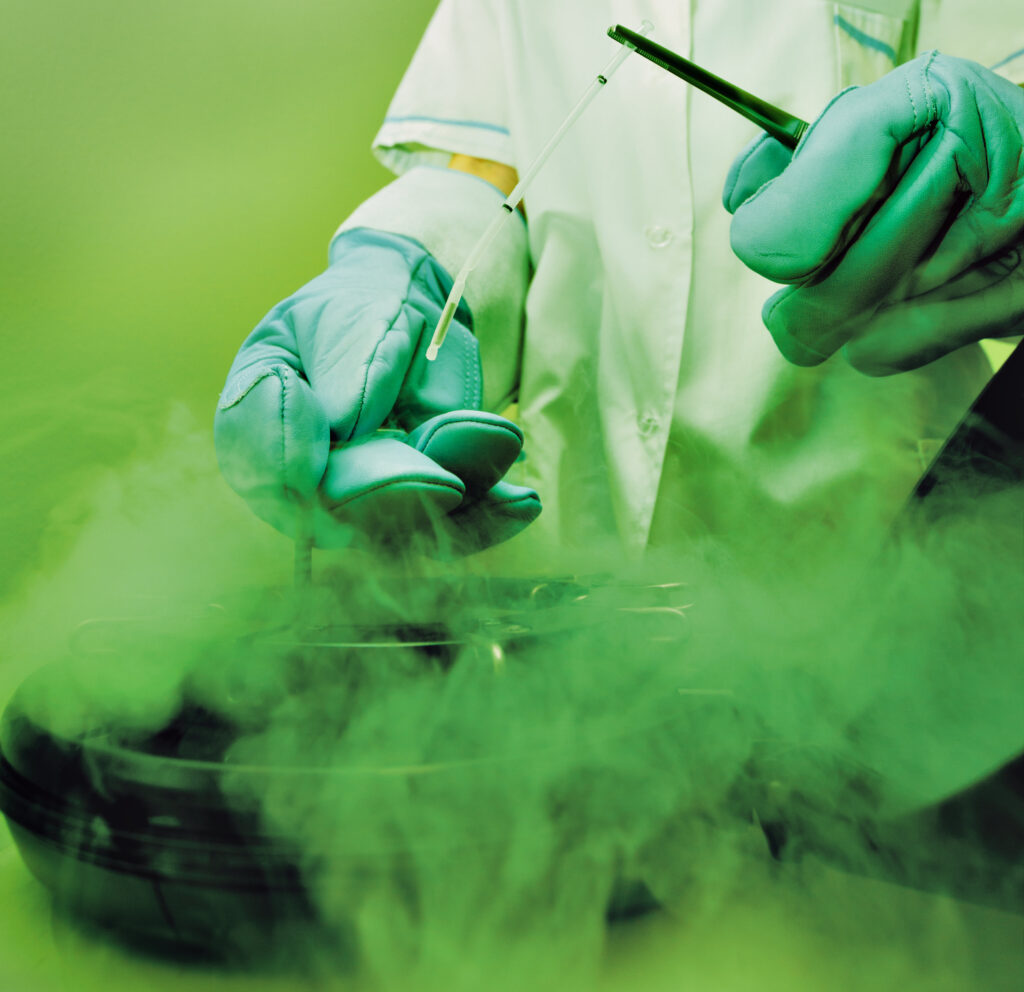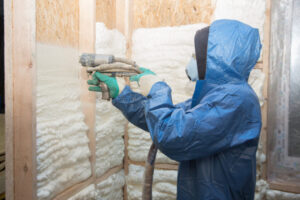Liquid nitrogen is a substance that interests people of all ages. When using liquid nitrogen, it is important to store and handle it safely. What are some of the safety concerns, and is flammability something to worry about?
Liquid nitrogen is not flammable. However, this substance can become very dangerous when incorrectly handled. Always store liquid nitrogen in a ventilated container. The liquid nitrogen should remain upright in an open space. Wear proper protective equipment while handling liquid nitrogen.
In this article, you will learn everything you need to know about using liquid nitrogen. We will first discuss the properties of liquid nitrogen and its potential to “burn” users. Second, we will explain safe handling procedures for liquid nitrogen. And finally, we will discuss the many uses for liquid nitrogen.
Properties of Liquid Nitrogen
Before we discuss the properties of liquid nitrogen, we first need to understand what it is. Simply put, liquid nitrogen is nitrogen in its liquid state. So why is this substance so interesting? We interact with nitrogen every single day. It is in the air we breathe, the ground we walk on, and the food we eat. But we never see it.
Liquid nitrogen brings this everyday substance to light. Not only can we see liquid nitrogen, but it does some incredible things!
Nitrogen begins to boil around -320 degrees Fahrenheit. Thus, liquid nitrogen does not naturally occur anywhere on earth. While distilling liquid air, scientists can collect pure liquid nitrogen.
Nitrogen must remain below -320 degrees Fahrenheit to keep its liquid form. Maintaining the liquid nitrogen at this temperature requires a well-insulated container. This container also allows the nitrogen to vent out as it evaporates.
It is necessary to vent nitrogen from the container to prevent it from exploding. One unit of liquid nitrogen converts to 694 units of nitrogen gas. As you can imagine, evaporating nitrogen fills space quickly. As it does, the container becomes pressurized. Once the container can no longer hold the pressure, it explodes.
Liquid nitrogen is not carcinogenic, nor is it flammable. When brought above -320 degrees Fahrenheit, the liquid immediately evaporates. But, then what are liquid nitrogen burns? If the substance cannot catch fire, how could you possibly get burned?
Liquid nitrogen burns do not occur with excessive amounts of heat. Instead, liquid nitrogen burns happen due to the extreme lack of heat.
Safe Handling of Liquid Nitrogen

When you purchase liquid nitrogen, it will come in a very well insulated container that allows the substance to ventilate out as it evaporates. When handling this container, wear loose-fitting, well-insulated gloves. If you touch the metal container with your bare hand, it could freeze to it.
Additionally, you do not want to wear tight gloves in case of a spill. If liquid nitrogen spills on your hands, you want to be able to remove the gloves quickly. If the freezing material remains on your hands, it could cause severe damage. This same principle should be adopted with the rest of your clothing when handling liquid nitrogen.
In addition to gloves, you should wear protective glasses, close-toed shoes, long sleeves, and long pants. You may consider wearing a face shield for extra skin protection.
Never transfer the liquid nitrogen to a sealed container. We have already explained that liquid nitrogen evaporates very quickly. As liquid nitrogen evaporates the gas fills the container and becomes pressurized. If the container collects too much pressure, it will explode. An exploding canister of liquid nitrogen could result in burns or asphyxiation.
Store the liquid nitrogen upright to avoid any spills. You should also store and use liquid nitrogen in a well-ventilated area. As the container lets out evaporated gas, it fills the room with nitrogen gas (you can not breathe pure nitrogen).
Be cautious when handling liquid nitrogen. When liquid nitrogen comes in contact with the skin, it immediately freezes it and the surrounding tissue. This “burn” is also known as frostbite. Treat it as such. Slowly warm the area with water. Do not attempt to use hot water as this will shock and damage the cells. Seek medical attention when possible.
If you or someone around you inhales the evaporating nitrogen, it will fill their lungs with nitrogen and will suffocate them. If this happens, move the afflicted person to an area with fresh air and seek medical attention.
Even the evaporating gas can be extremely cold. It will still run the risk of causing frostbite. Never ingest liquid nitrogen. If swallowed, it will freeze all of the tissue it touches. Contact medical help in the event this occurs.
Uses for Liquid Nitrogen
Now that you know how to safely handle liquid nitrogen, we can move on to how it is used! Liquid nitrogen is commonly used in medical procedures. It can be used to freeze off warts or cancerous cells as well as to cryogenically freeze eggs and sperm cells.
Another common use for liquid nitrogen is in food storage. When produce is harvested, it must travel a long way to get to the grocery store. These trips often take longer than it would take the food to spoil. Liquid nitrogen is used to preserve the food until it gets to the store where it can be sold.
Other uses for liquid nitrogen include strengthening concrete, branding cattle, science projects, and cooking (must be fully evaporated before ingesting). But there are fun uses for liquid nitrogen too!
You can use liquid nitrogen to make instant ice cream! Find the recipe for liquid nitrogen ice cream here from Steve Spangler Science.
Need some more liquid nitrogen ideas? Watch some of Steve Spangler's liquid nitrogen experiments in the following video!
Other fun projects for liquid nitrogen include making a hammer out of a banana, freezing flowers, making instant fog, killing weeds, and so much more.
No matter what project (or projects) you decide to use liquid nitrogen for, be sure to take safety precautions and follow proper handling instructions. While liquid nitrogen is not toxic nor flammable, it can cause severe burns as well as suffocation. Have fun, but be safe!



